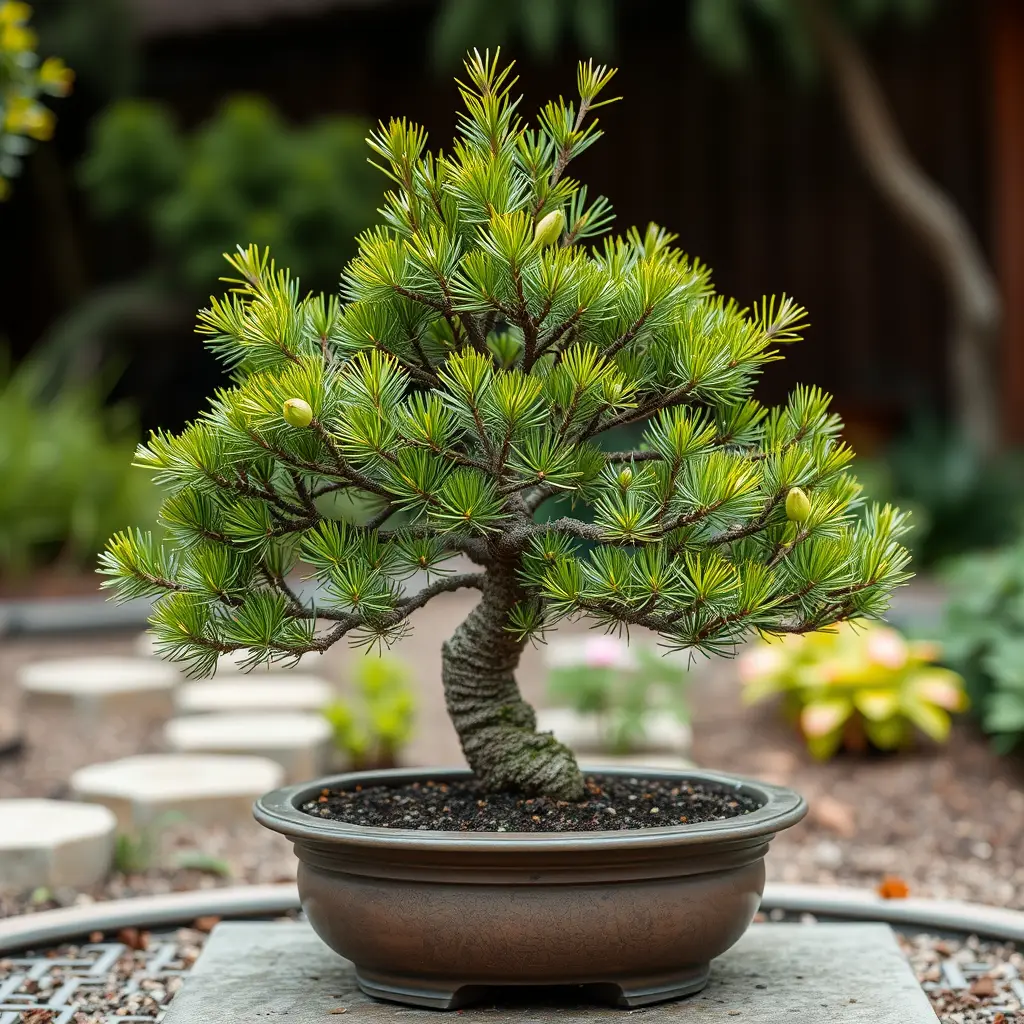A Comprehensive Guide to Pine Bonsai Trees (Pinus): Care, Techniques, and Tips for Success
Pine bonsai trees are a beloved choice among bonsai enthusiasts, often evoking the quintessential image of a bonsai tree. Their versatility in growth shapes allows them to be styled in nearly every bonsai form, making them a favorite for both beginners and seasoned practitioners. Popular species such as the Japanese black pine, Japanese white pine, Scots pine, and Ponderosa pine are commonly cultivated for bonsai. This guide will delve into the essential care techniques, propagation methods, and tips for ensuring the success of your pine bonsai.
Understanding the specific needs of pine bonsai trees is crucial for their health and longevity. From sunlight requirements to watering practices, each aspect plays a significant role in nurturing these beautiful trees. This guide will provide you with the knowledge needed to cultivate your pine bonsai successfully, ensuring it thrives for years to come.
TOC
- Understanding Pine Bonsai Trees
- Care Requirements for Pine Bonsai
- Fertilization and Pruning Techniques
- Repotting and Propagation
- Common Issues and Solutions
- FAQ
- Conclusion
Understanding Pine Bonsai Trees
Pine bonsai trees belong to a diverse group of species that can adapt to various environments. Their ability to grow in different shapes in nature makes them particularly suitable for bonsai cultivation. The most popular species include:
- Japanese Black Pine: Known for its resilience and adaptability.
- Japanese White Pine: Valued for its aesthetic appeal and soft needles.
- Scots Pine: Recognized for its rugged appearance and hardiness.
- Ponderosa Pine: Appreciated for its unique bark and growth patterns.
Each species has its unique characteristics, but they all share similar care requirements, making them accessible for bonsai enthusiasts of all levels.
Care Requirements for Pine Bonsai
Caring for a pine bonsai involves several key practices to ensure its health and vitality. First and foremost, pine bonsai should be placed outdoors year-round, as they thrive in sunny positions. They are frost hardy but should be protected from extreme cold, particularly temperatures around 15 degrees Fahrenheit (-10 degrees Celsius).
Watering is another critical aspect of pine care. It is essential to water generously whenever the soil feels slightly dry. A recommended technique is to water the bonsai, wait a minute, and then water again to ensure the entire root mass is adequately hydrated. However, it is crucial to avoid overwatering, as pines do not like to sit in constantly wet soil. A well-draining soil mixture is vital for maintaining the right moisture levels.
Fertilization and Pruning Techniques
Fertilization plays a significant role in the growth of pine bonsai. It is advisable to fertilize your pine once a month during the growth season, which spans from early spring to fall. Using an organic solid fertilizer will provide the necessary nutrients for healthy growth.
Pruning is equally important for maintaining the shape of your pine bonsai. Regular pruning helps control the size and encourages bushier growth. Key pruning techniques include:
- Shortening elongated candles from late spring to early summer.
- Removing surplus shoots in autumn if not done in spring.
- Ensuring that no more than two candles remain in the same location.
These practices will help shape your bonsai and promote a balanced growth pattern.
Repotting and Propagation
Repotting is a necessary practice for bonsai trees, especially since they are kept in small pots. It is recommended to repot your pine bonsai every two years. Signs that your bonsai needs repotting include roots circling around the root system. If the roots are still contained within the soil, it is best to wait until the following spring to check again.
The ideal time for repotting is in spring, just after the buds begin to grow. Propagation can be achieved through seeds, which are widely available from bonsai retailers. This allows enthusiasts to grow their own pine bonsai from scratch, providing a rewarding experience.
Common Issues and Solutions
Pine bonsai trees can face several common issues, particularly related to light and watering. If the needles of your pine turn yellow, it may indicate insufficient light or improper watering practices. To remedy this, ensure your bonsai is placed outdoors in a location that receives ample sunlight. Additionally, water generously when the soil is slightly dry, avoiding constant wetness.
Regular observation of your bonsai will help you catch any issues early, allowing for timely intervention and care.
FAQ
What is the best location for a pine bonsai?
Pine bonsai should be placed outdoors in a sunny position year-round to thrive.
How often should I water my pine bonsai?
Water your pine bonsai generously whenever the soil feels slightly dry, ensuring the entire root mass is hydrated.
When should I fertilize my pine bonsai?
Fertilize your pine bonsai once a month during the growth season, from early spring to fall, using an organic solid fertilizer.
How do I know when to repot my pine bonsai?
Repot your pine bonsai every two years or when you notice roots circling around the root system.
What should I do if the needles of my pine bonsai turn yellow?
Yellowing needles may indicate insufficient light or improper watering. Ensure your bonsai receives enough sunlight and adjust your watering practices accordingly.
Conclusion
Caring for pine bonsai trees can be a fulfilling and rewarding endeavor. By understanding their specific needs for sunlight, watering, fertilization, and pruning, you can cultivate a healthy and beautiful bonsai. Regular observation and timely interventions will help you address any issues that arise, ensuring your pine bonsai thrives for years to come. Whether you are a beginner or an experienced bonsai enthusiast, these tips and techniques will guide you on your journey to success with pine bonsai trees.


